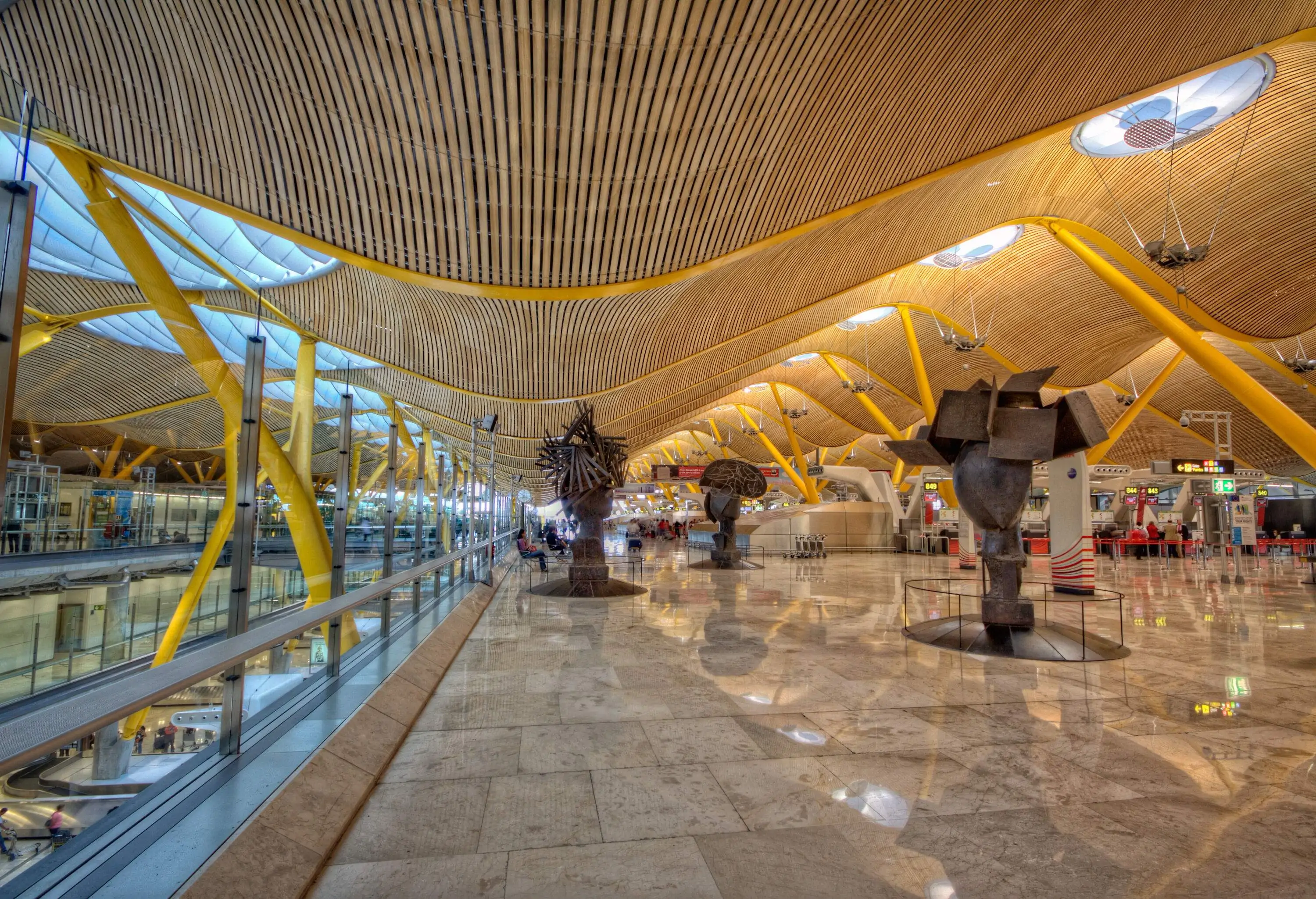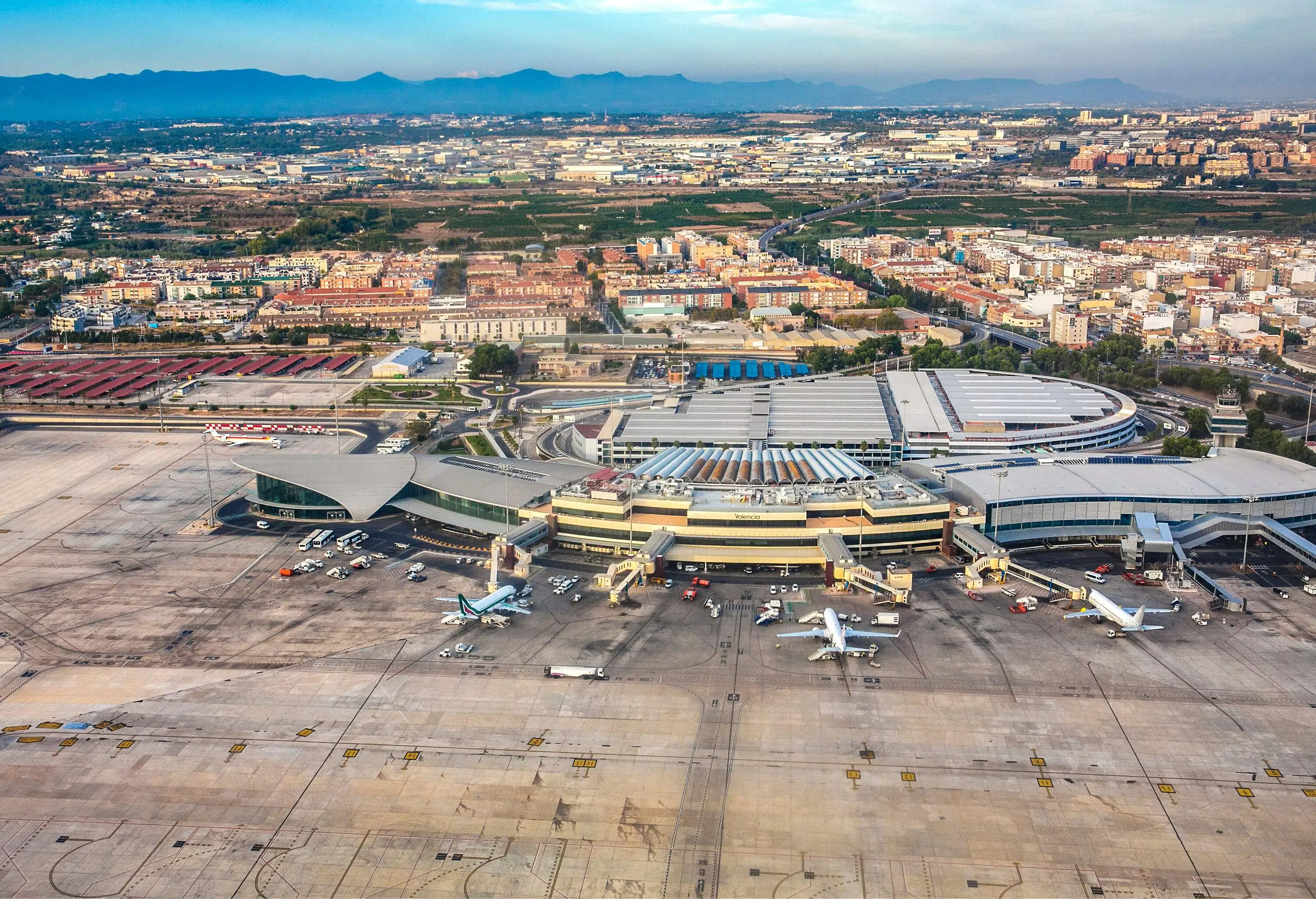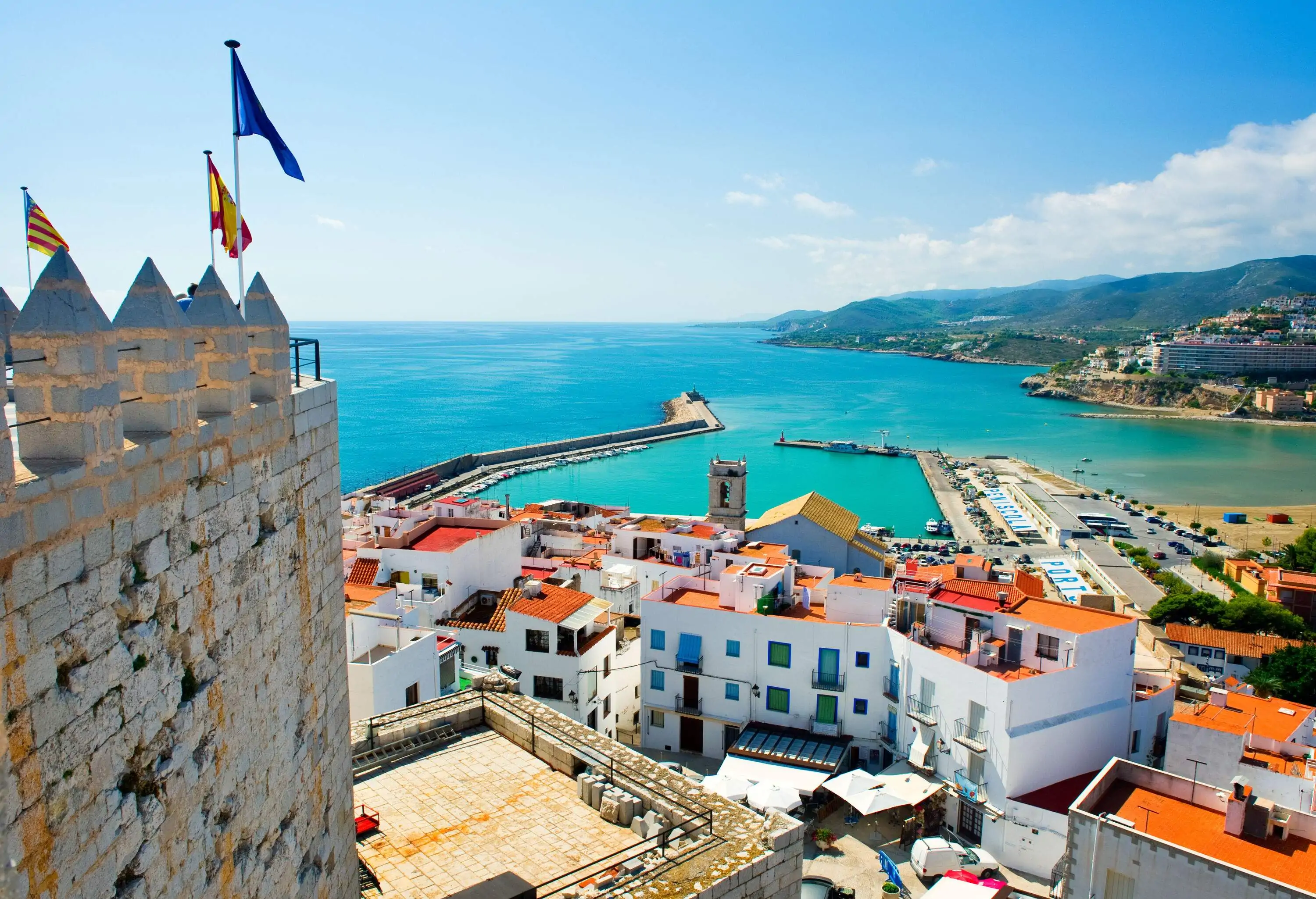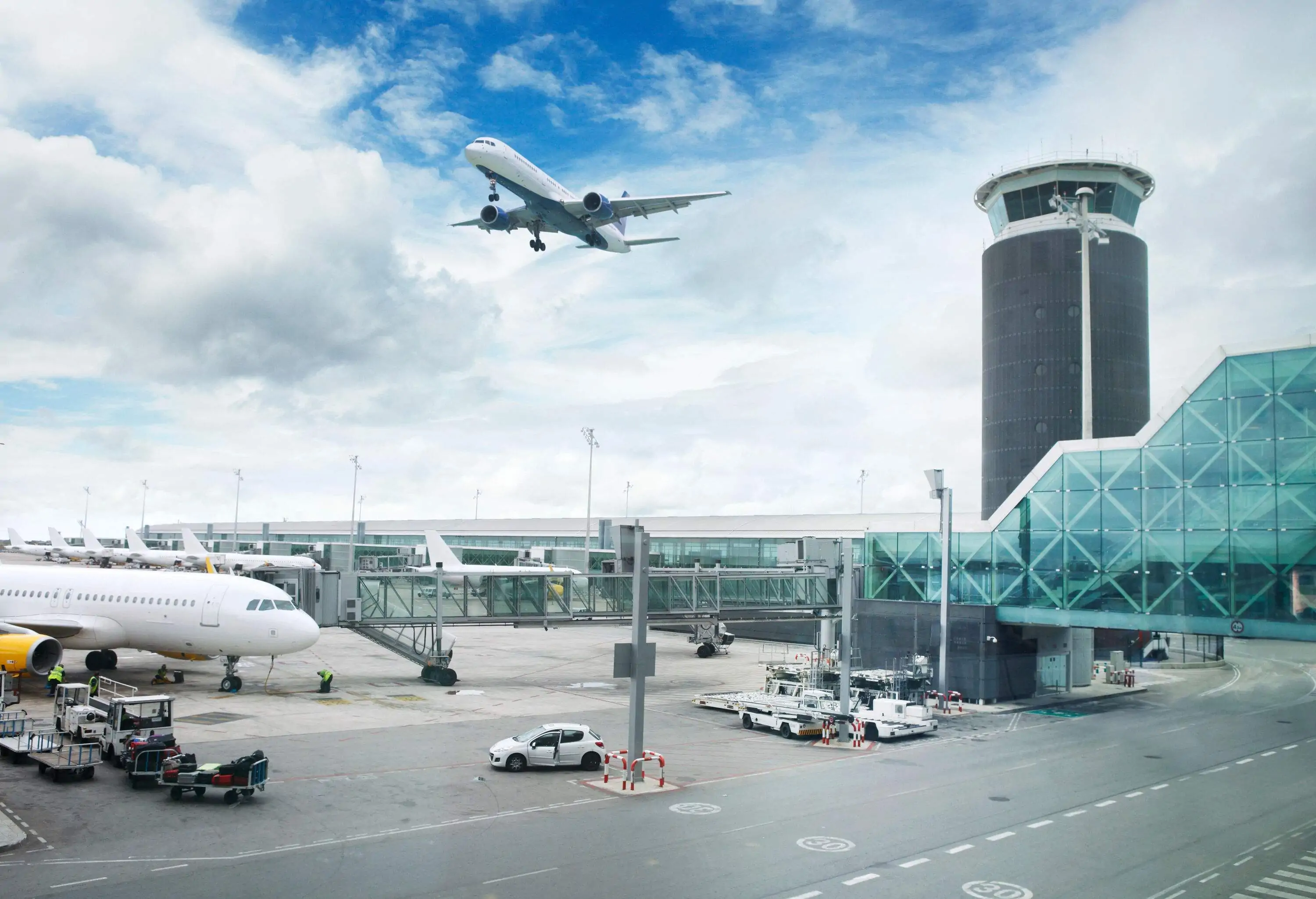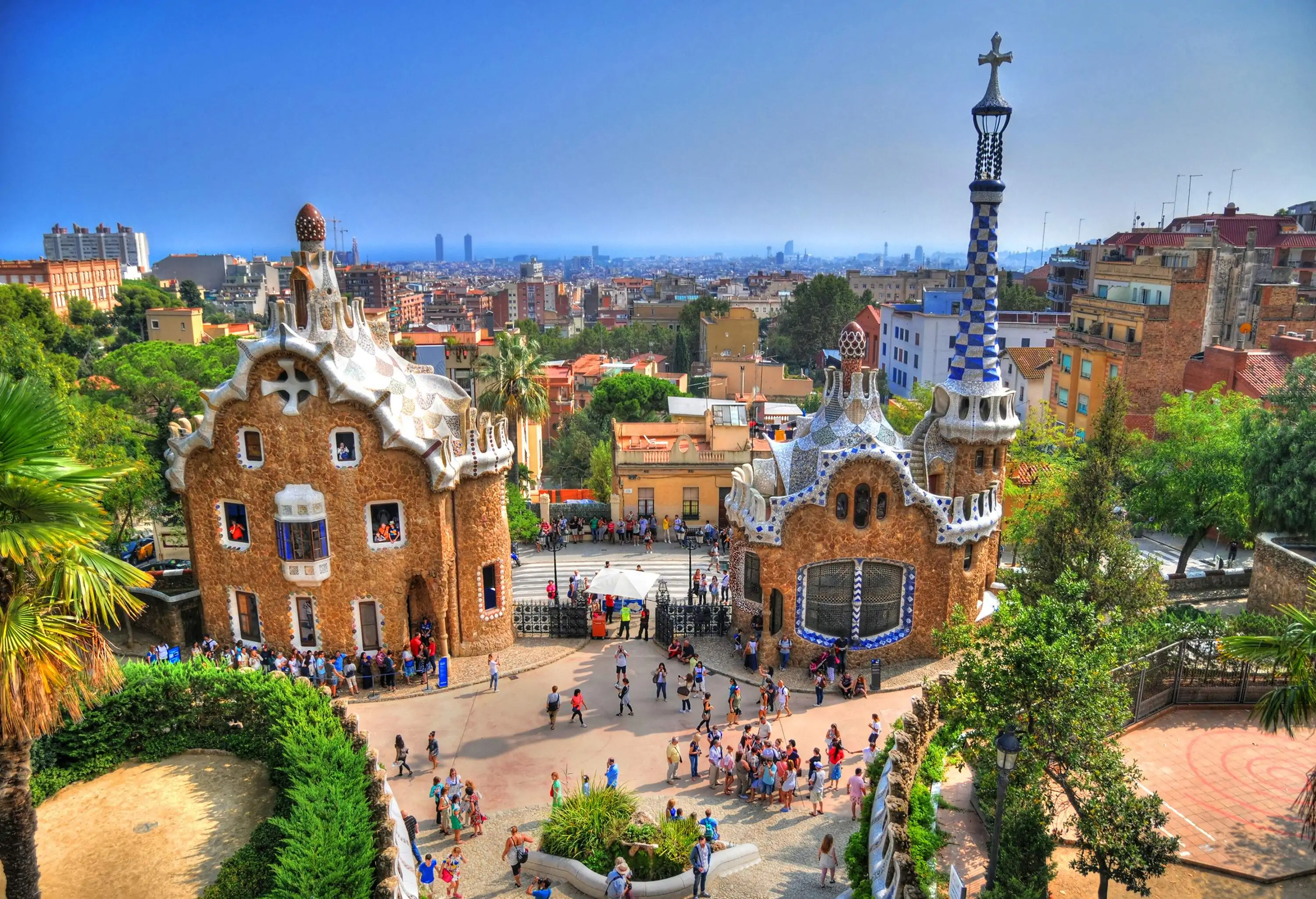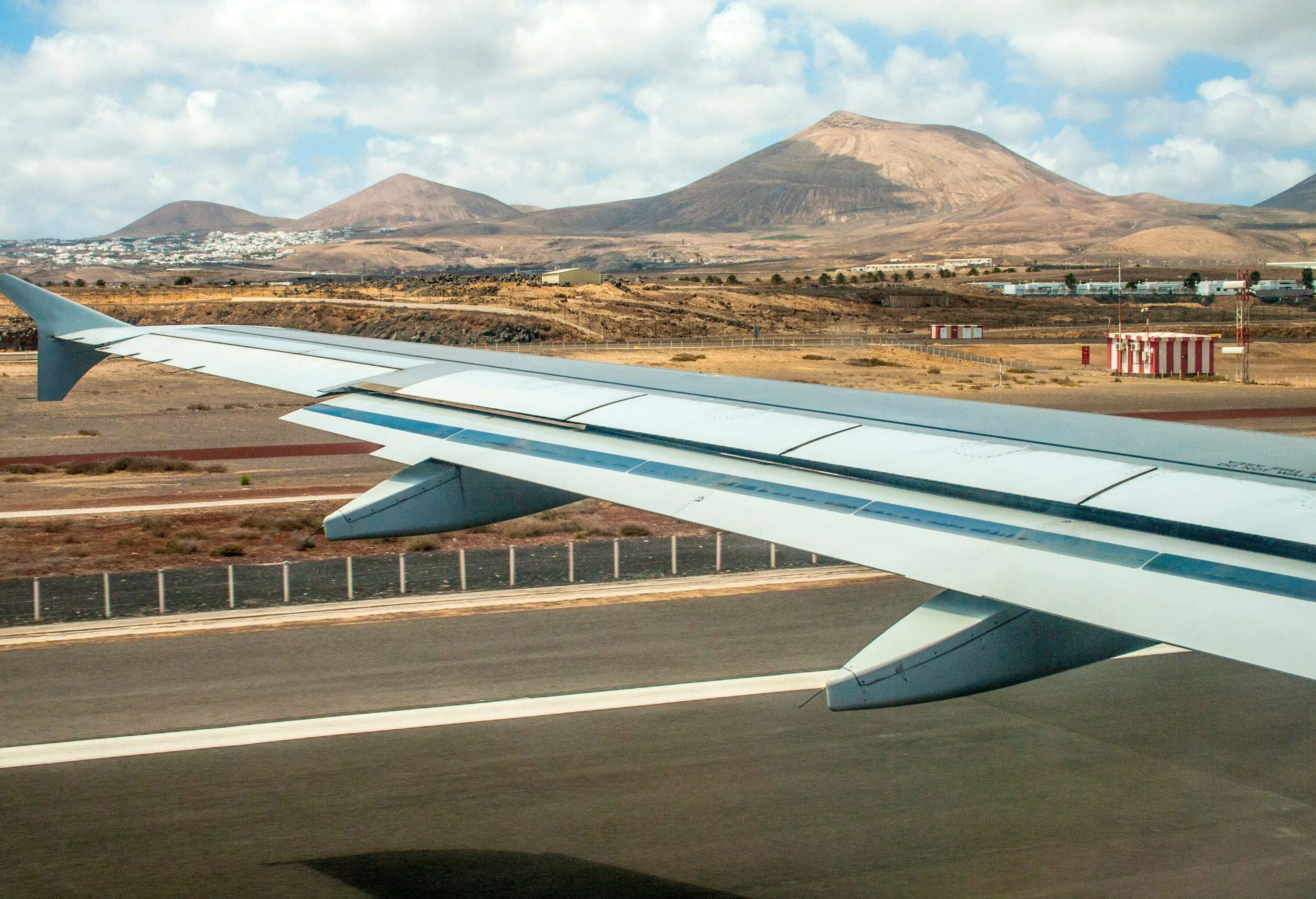Planning a Spanish getaway? We’ve put together this helpful list of airports in Spain to get you started. Our guide to Spain airports includes all the information you need to know before you go.
Just choose your city below and find information about local and international airports in Spain including their facilities, transfer tips, parking info, how to get around town, car rental and other helpful details for an easy and unforgettable trip.
Explore the top airports in Spain
Spain is home to many airports, most of which serve international flights, so you’ll find an easy way to get there no matter where you’re going. The airports in Spain range from the very big (Madrid) to the very small (Lanzarote in the Canaries), but all of them boast friendly and helpful staff, plenty of food and drink offerings, and various flight options.
So, how should you choose which airport in Spain to fly to? That depends on your desired destination. Larger airports like those in Madrid and Barcelona also serve as gateways to nearby areas such as Toledo and Tarragona. It may also be cheaper to buy flights to larger international airports in Spain and then take a train or bus to your final destination. Regardless of where you’re going, it’s a good idea to brush up on the airport of your choice to avoid any unpleasant surprises once you arrive. Read on for our guide to the top 10 airports in Spain.
Visit the birthplace of paella via Valencia Airport (VLC)
Valencia Airport, also known as Manises Airport, is a small airfield by Spanish standards. Despite it having just one terminal, it still manages to process nearly ten million passengers every year. Extensive renovations were carried out in 2007 for the hosting of the America’s Cup, and today it is a modern facility with convenient public transport options into the city of Valencia.
You can find flights to Valencia Airport from many European cities including Geneva, London, Madrid, Rome, Paris, Vienna, Amsterdam, Zurich and Prague. Valencia is considered a medium-sized airport in Spanish terms, but it feels dwarfed by massive airports like Madrid, from which many incoming passengers originate.
Although this airport in Spain isn’t ideal for long stopovers, spending an hour or two relaxing in the airport cafes is a perfectly pleasant way to pass the time.
Learn flamenco in Seville via San Pablo Airport (SVQ)

Rebuilt for the 1992 Universal Exposition, Seville’s San Pablo Airport is a highly functional, no-nonsense airport, providing travelers with easy access to the beautiful capital city of the Andalusia region as well as the famed beaches of the Costa del Sol.
Flights to San Pablo Airport are provided by several airlines – including several low-cost carriers such as Ryanair, Vueling and easyJet – offering short, inexpensive connections to leading European and North African destinations. Welcoming more than 6.5 million sunseekers each year, San Pablo is a busy hub that has earned a reputation for being a much more pleasant, relaxing transit point than other airports in Spain.
Cheap flights to Seville are the hardest to find between May and August, so book your flights early to secure the lowest fares.
Immerse yourself in art in Madrid via Madrid Barajas Airport (MAD)
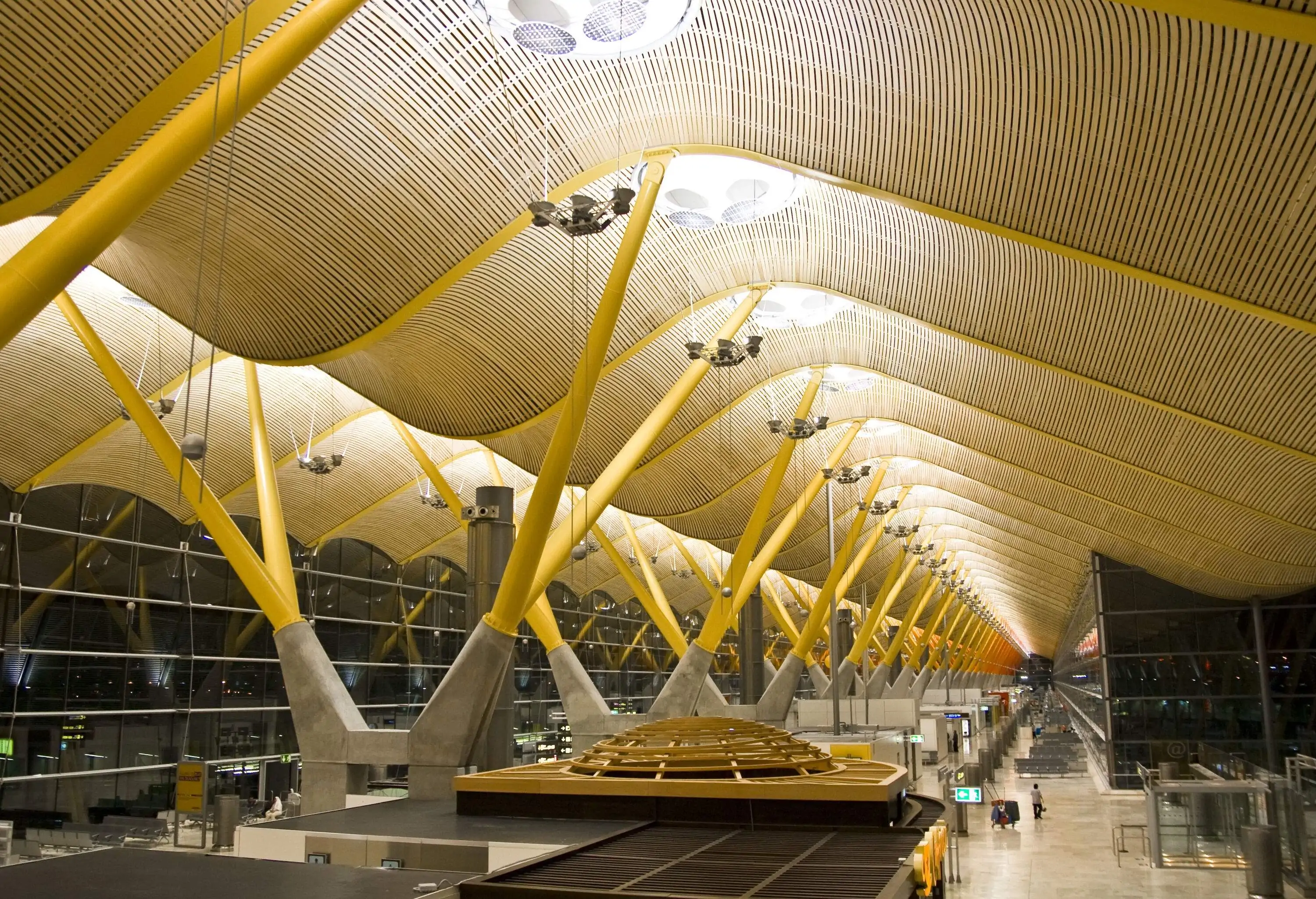
On average, more than 50 million travelers a year make their way through Madrid Barajas Airport (MAD), Spain’s main gateway. Conveniently close to the city center, it’s easily accessible by rail or road. Flights to Madrid Barajas Airport come in from major hubs around the world.
Acting as the main bridge between Europe and Latin America, Madrid Barajas Airport places emphasis on speed, efficiency and traveler comfort, and uses the latest technology to facilitate a smoother, more enjoyable journey. A big part of the running of Barajas Airport is the careful monitoring of the facility’s environmental impact.
The airport is run under Aena Aeropuertos’ environmental quality policy so that its activity stays within regulations. Employees, companies and travelers all regularly participate in awareness campaigns that examine the facilities and their impact on the airport’s natural surroundings.
Visit the birthplace of Pablo Picasso via Málaga Airport (AGP)
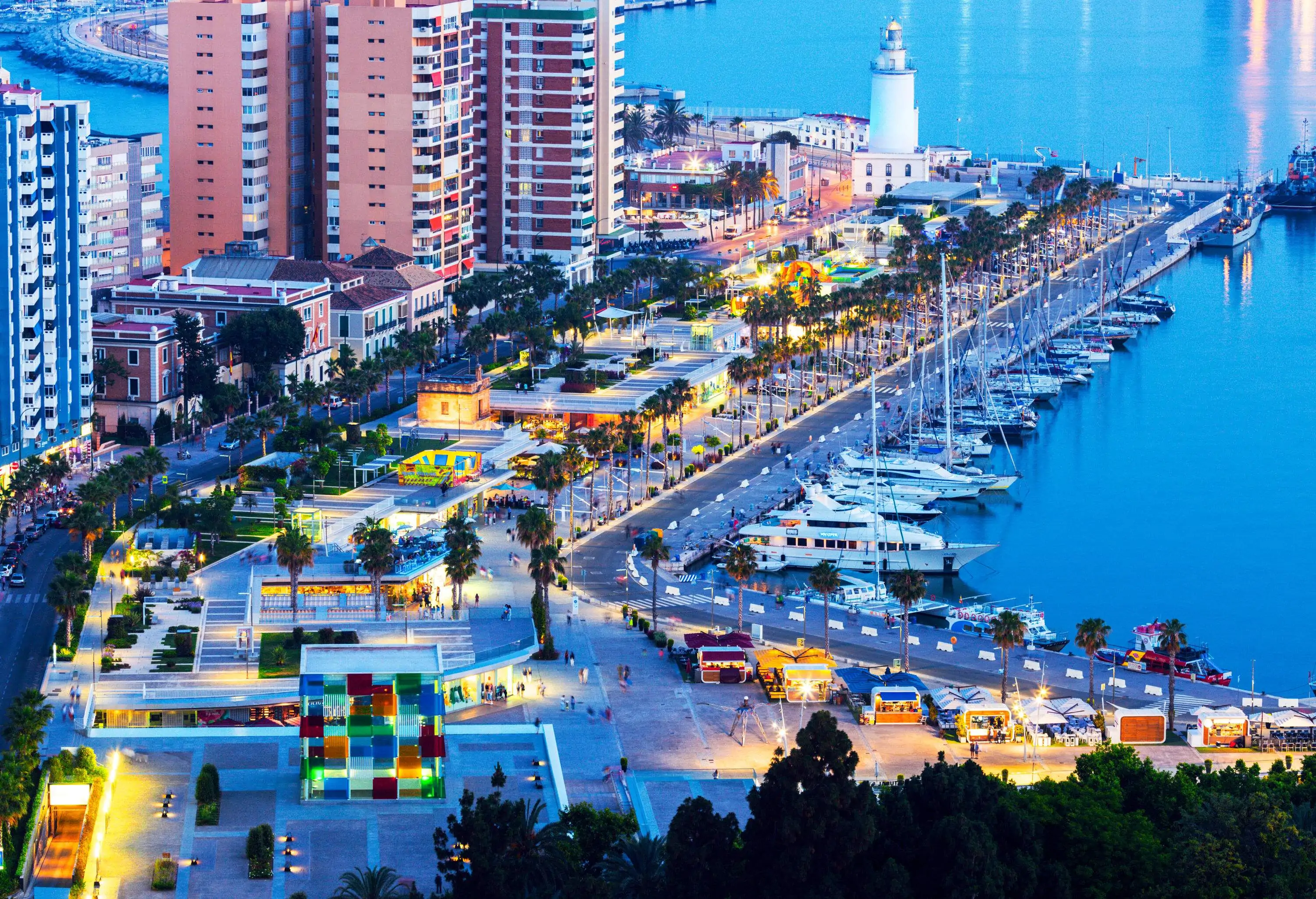
Malaga Airport (AGP) is one of the busiest airports in Spain and an important tourism gateway to the popular Costa del Sol region. It’s situated 5 miles (8km) from the city of Malaga and 3.1 miles (5km) from Torremolinos. More than 12 million passengers catch flights to Malaga Airport from all over the world each year, especially in the summer months.
There are three terminals at Malaga Airport. Different airlines have check-in desks at different terminals, but all flights leave from Terminal 3 (the newest terminal) which opened in late 2010. It’s twice the size of Terminal 2 and has a large food hall, as well as several other facilities.
Although the new Terminal 3 is spacious and has lots of new facilities, this is one of those airports that feels like it’s permanently under construction, so be prepared for detours and poor signage at times.
Explore the heart of Catalonia via Barcelona International Airport (BCN)
Barcelona International Airport (BCN) is generally known as El Prat Airport. It’s located 8 miles (12 km) outside of Barcelona and is the second-largest airport in Spain, serving over 50 million passengers per year. Its close proximity to Barcelona makes El Prat a great airport from which to start a Spanish break. The airport caters to tourists and locals alike with a great selection of shops and duty-free items.
The El Prat Airport receives most of its flights from other European airports and a few from airports in North Africa. The terminal is easy to navigate and staff at the airport are always willing to help. El Prat is popular with low-cost airlines and serves as a hub for Ryanair, Spanair and Vueling. Iberia and Air Europa also have regular flights to and from El Prat Airport and it’s easy to find domestic, European and charter flights to this airport too.
Several major carriers choose to use El Prat (including British Airways, American Airlines and Air Canada) and most flights to the Canary Islands, Granada and the Balearic Islands either have a stop at or originate from Barcelona Airport.
Hit the beach in Alicante via Alicante International (ALC)
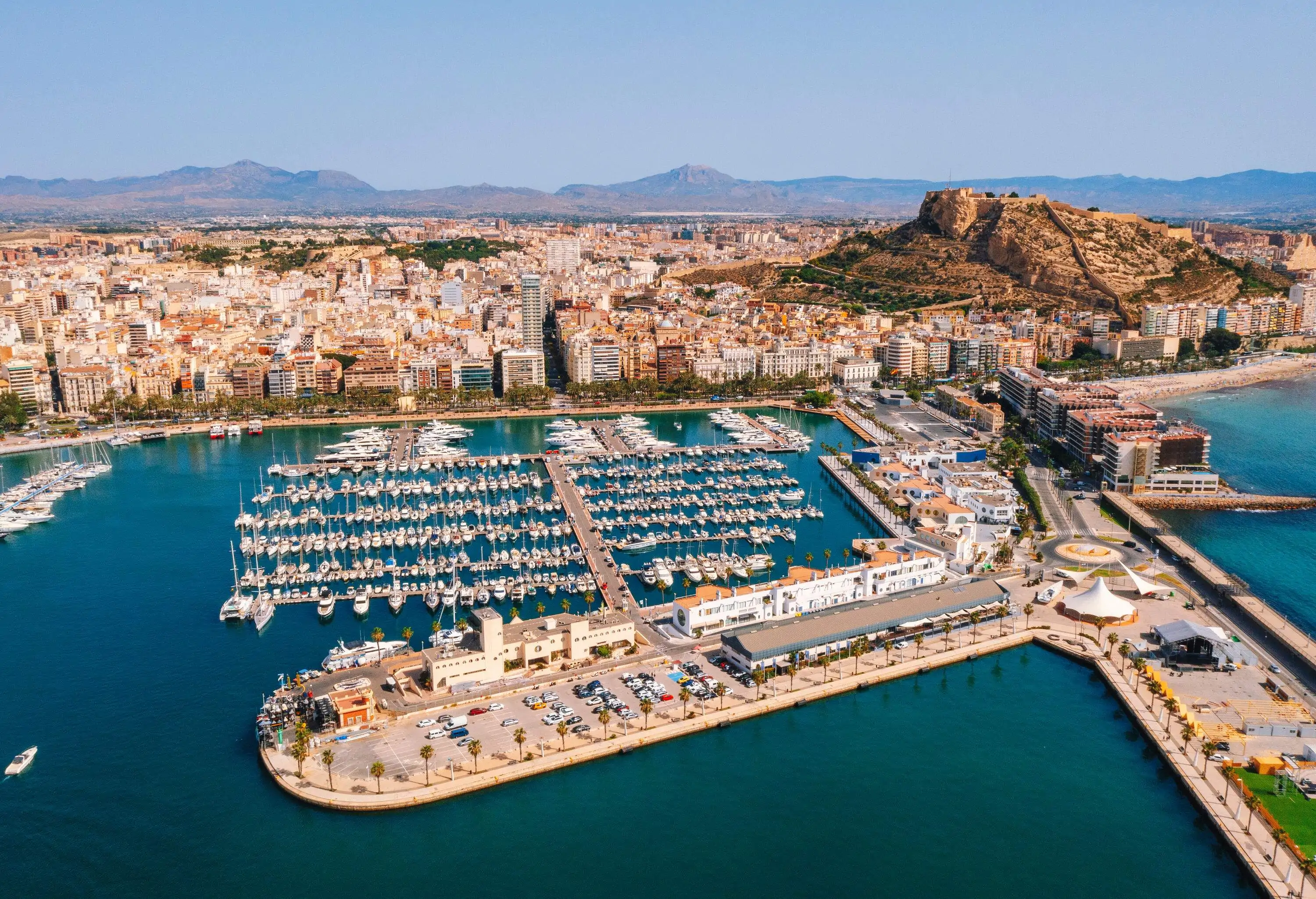
Situated on the Mediterranean coast, Alicante International Airport (ALC) is an ideal gateway to Spain’s pristine coastline. The country’s sixth-busiest airport underwent major renovations in March 2011, including the construction of a new terminal large enough to handle 30 million travelers annually.
This sun-drenched airport offers plenty to do for passengers waiting to board. Between retail shopping and internet surfing in the VIP lounge, you can grab a bite to eat at the delightful tapas bar or pose with friends and family in the newly installed photo booths.
Flights to Alicante Airport arrive daily from Madrid, Barcelona and other hubs, primarily from across Europe. Almost 30 million passengers access this gateway to the Costa Blanca each year. The unparalleled beach resorts attract both low-cost carriers such as Ryanair, easyJet and Air Berlin, as well as full-service airlines such as Iberia.
Alicante’s modern architecture and spacious layout create an aesthetic as refreshing as the vacation you’re bound to have in Spain.
Live the island life in the Canary Islands via Lanzarote Airport (ACE)
Lanzarote Airport (ACE) serves the sunny Canary Island of Lanzarote and is conveniently located 3 miles (5 km) southwest of the capital city, Arrecife. In addition to receiving a much-needed facelift during the 1990s, a section of the airport’s Guacimeta Terminal was dedicated to serving as an aviation museum in 2002 in response to tourists’ keen interest in the island’s aviation history.
With roughly seven million travelers on more than 46,000 flights to Lanzarote Airport each year, the facility is very busy, especially during the summer season. The terminals are rather small and often feel overcrowded (but seldom chaotic), especially on Thursdays when several British flights to Lanzarote Airport arrive.
Visit the most famous Canary Island via Las Palmas/Gran Canaria Airport (LPA)
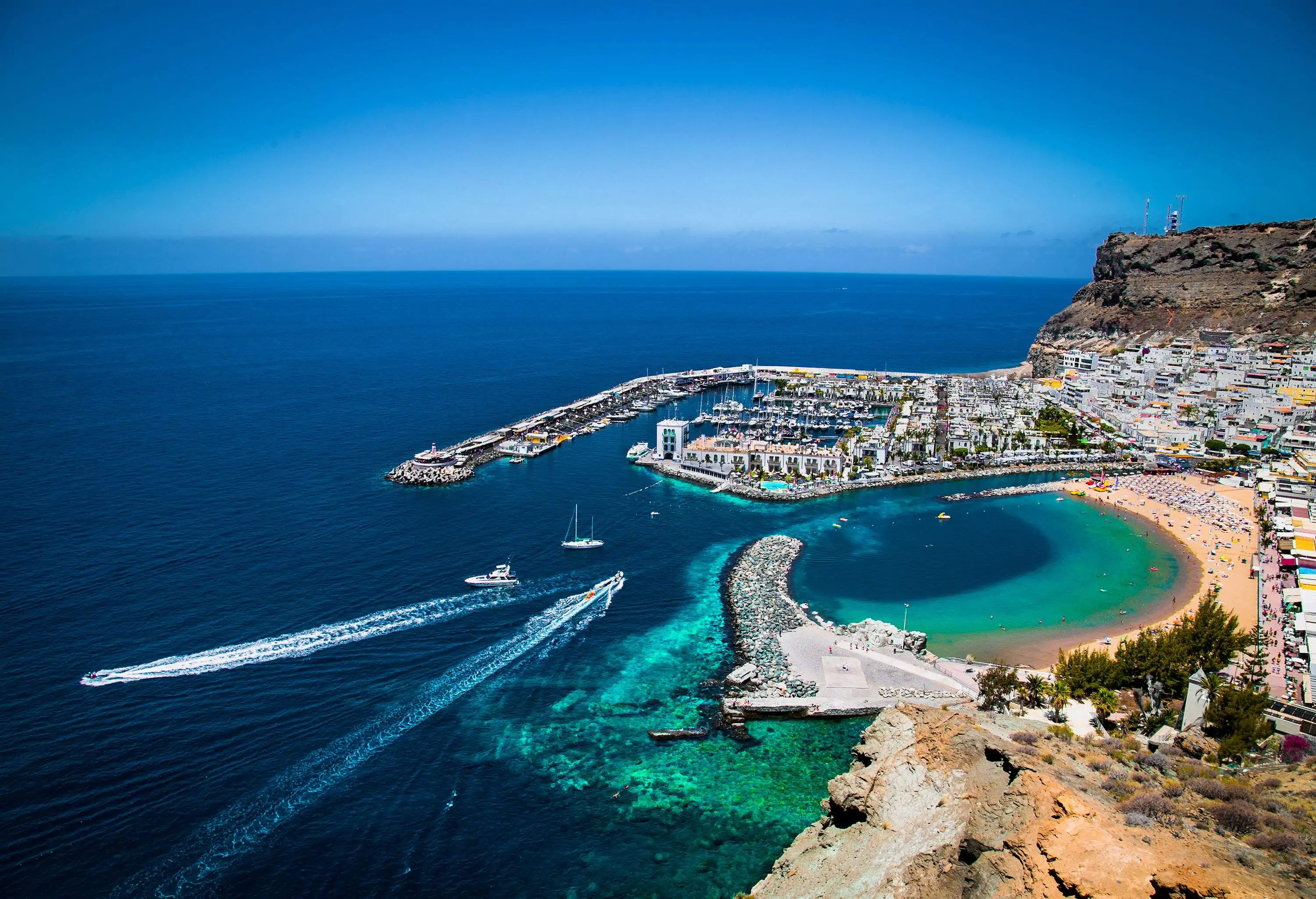
Located approximately 12 miles (19 km) south of the city of Las Palmas de Gran Canaria and 16 miles (25 km) north of the island’s popular tourist areas, Gran Canaria Airport (LPA) or Las Palmas Airport handles almost 23 million passengers per year. Locally referred to as “Aeropuerto de Gando”, it is the Canary Islands’ busiest aerial hub and Spain’s fifth-busiest airport.
With a reasonable selection of shops and places to wine and dine as well as warm and friendly service at an assortment of facilities, traveling through Gran Canaria Airport is a pleasant experience. Clear days offer majestic views of distant mountains. Be aware, though, that breezier weather brings extreme tailwinds to the island, sometimes affecting flight schedules.
But in general, temperatures at Las Palmas International range from mild to moderate throughout the year, so you needn’t carry much in your luggage except for a camera, cap and pair of shades. Like all tourist gateways, Las Palmas can get chaotic at times, especially during the peak summer months of July and August. However, staff do their best to offer assistance in terms of speeding up procedures and going the extra mile to help passengers.
Enjoy a relaxing beach getaway via Palma de Mallorca Airport (PMI)

The island of Majorca may be small, but its airport, Palma de Mallorca Airport (PMI), is big – big enough to accommodate the legions of vacationers who arrive every summer to enjoy the sunny beaches of this Mediterranean island. Along with Ibiza, Formentera and Minorca, Majorca is one of the most popular vacation destinations in the Spanish Mediterranean, and the airport processes roughly 30 million passengers each year.
Flights to Palma de Mallorca Airport come in from around Europe, including most of the UK airports such as London, Glasgow, Birmingham, Manchester and East Midlands. There are also flights from Brussels, Paris, Prague, Amsterdam, Barcelona, Venice, Geneva, Istanbul, Rome, Budapest, Frankfurt, Zurich, Sofia, Madrid and Warsaw.
Palma de Mallorca is built for large crowds, but in the peak summer season the queues for budget flights back to the UK are annoyingly long and the airport is often packed. The staff members are helpful, however, and do their best to assist with any problems that arise.
Visit the party capital of Spain via Ibiza Airport (IBZ)
Ibiza Airport (IBZ) is the main gateway to two of the Balearic Islands: Ibiza and Formentera. The airport is 4.3 miles (7 km) southwest of Ibiza, and although the island is small, its popularity as a summer party destination ensures passenger numbers of around nine million people each year.
About 85 percent of the visitors to Ibiza arrive between May and October. If you’re there at the right time (and in the right mood), you can catch some of the world’s best trance, house, and techno DJs performing all through the summer. Alternatively, you can take one of the many guided tours through the city and its surroundings, many parts of which have been declared UNESCO World Heritage sites.
The airport is quite small, with only one terminal building, and getting into town is easy enough using either the buses or taxis. Aside from grabbing a bite to eat or getting a beer at the bar, there isn’t a whole lot to do at the airport itself.
This article was refreshed on August 2nd, 2024.

